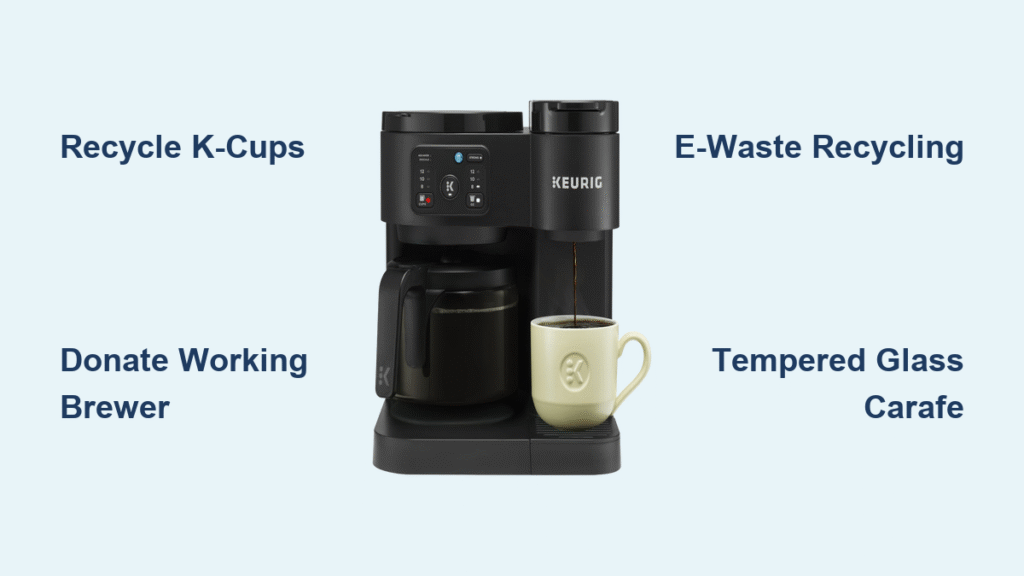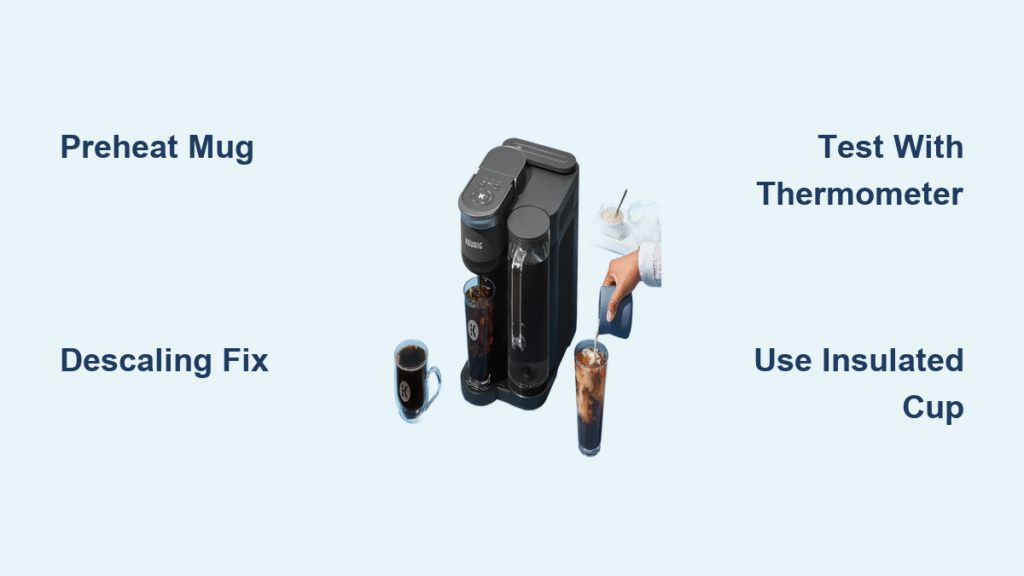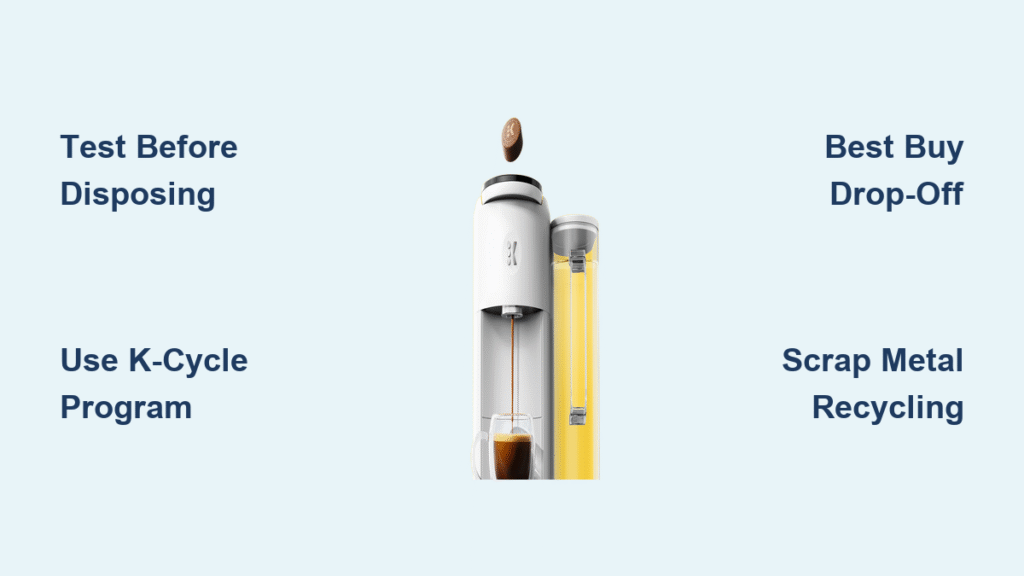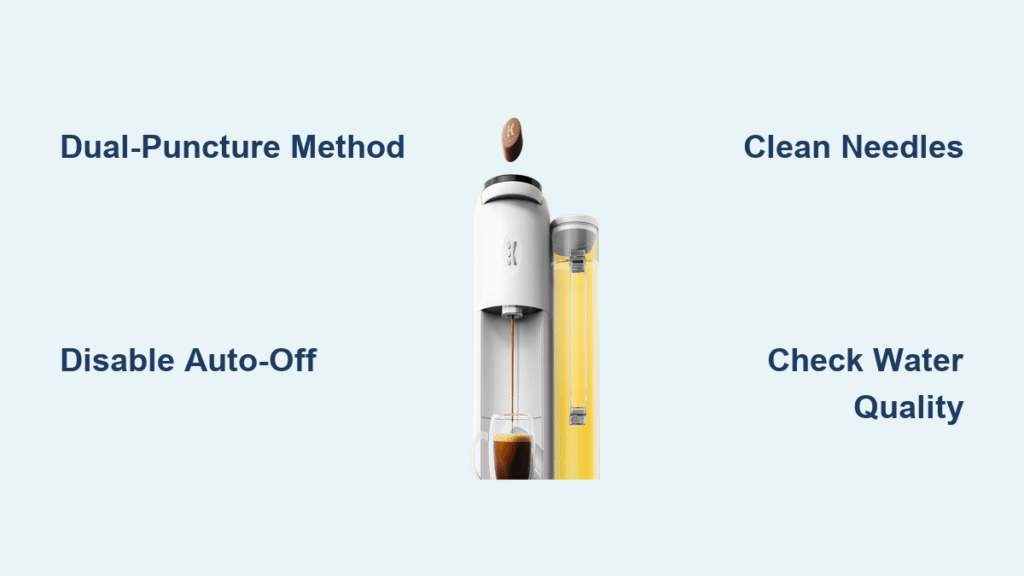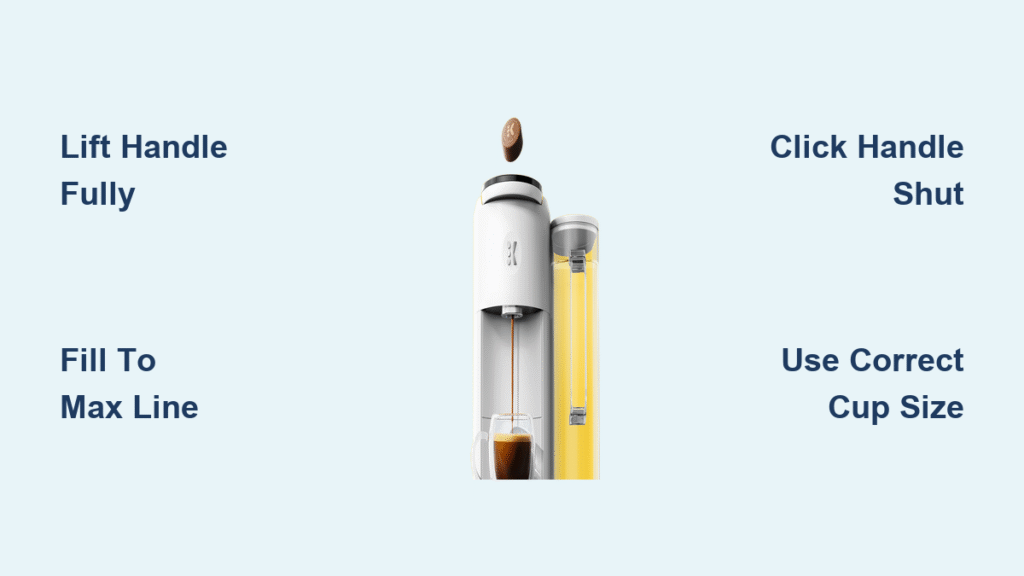That sinking feeling when your Keurig sputters its last brew—only to face a drawer overflowing with used pods—hits millions of coffee lovers daily. Tossing your dead brewer and plastic pods feels wrong, but confusing recycling rules make proper disposal overwhelming. You’re not alone: most municipal programs reject Keurig components even when they accept similar materials. This guide cuts through the confusion with exact steps to recycle every piece—from foil lids to electronic brewers—using Keurig’s official programs and verified local options. Stop contributing to landfill waste and discover how to turn your coffee habit into a sustainable ritual.
Why Your Keurig Pods Won’t Recycle in Curbside Bins (And What to Do Instead)
Despite being made of 100% #5 polypropylene plastic—which many cities accept—Keurig pods almost always get rejected at recycling facilities. Automated sorting systems mistake them for contaminants due to their small size and mixed materials. Never assume your local program takes pods, even if they list #5 plastic acceptance. One contaminated batch can derail an entire truckload of recyclables. Instead, use these proven methods that guarantee proper processing.
Fix Pod Waste with Keurig’s Prepaid K-Cycle Bag
Skip the municipal guessing game with Keurig’s dedicated at-home recycling bag. Order it directly from Keurig.com for $7.49 (with auto-delivery) or $9.99 one-time, and you’ll receive a bag with a prepaid shipping label attached—no extra postage needed. This program processes all components: plastic shells, internal filters, and even the bag itself. Here’s how to prepare your pods correctly:
- Peel foil lids starting at the puncture hole (discard lids in regular trash—they’re not recyclable)
- Tap out coffee grounds into compost or trash (filters stay inside the pod)
- Nest empty pods tightly until you reach 96 pods—the bag’s max capacity
Seal the bag and drop it at any mailbox, Post Office, or UPS location. Within weeks, your pods become new plastic products like storage containers. Pro tip: Enable auto-delivery to save 25% and avoid running out of bags mid-month.
Office Pod Recycling Without the Headache
Businesses drowning in pod waste need bulk solutions. Keurig’s Commercial K-Cycle program provides large collection bins that handle high-volume disposal. Staff simply brew, discard pods into the bin, and ship it back when full—no peeling or emptying required. The program separates components: plastic/aluminum gets recycled, while coffee grounds and filters go to compost facilities. Visit keurigkcycle.com to get volume-based pricing and schedule bin delivery. Most offices recoup costs through sustainability tax incentives.
How to Recycle a Broken Keurig Brewer (Without Trashing It)
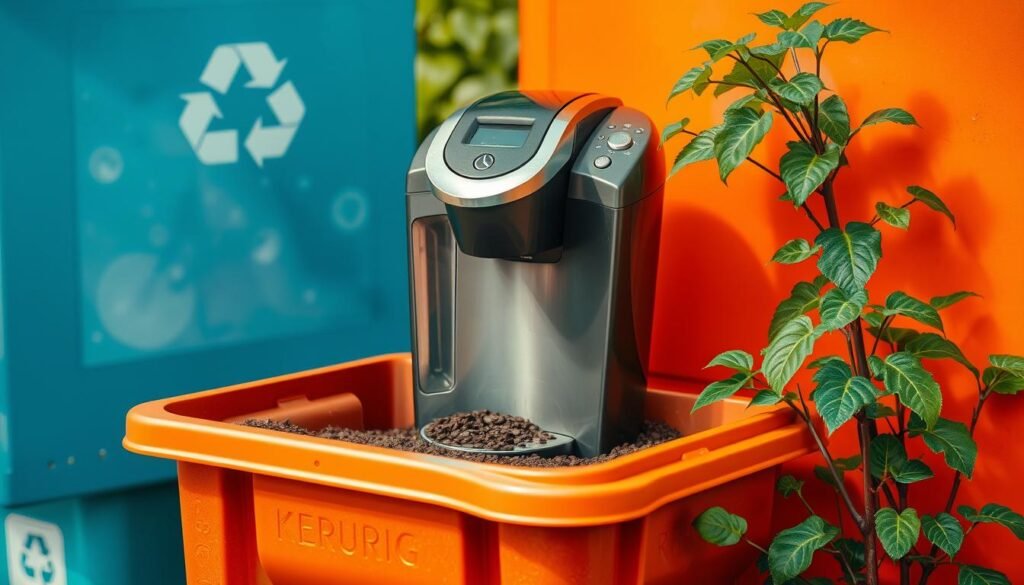
Your dead Keurig isn’t garbage—it’s e-waste requiring special handling. Electronic components contain metals that leach into soil and water when landfilled. Throwing it in regular trash violates disposal laws in 22 states. Follow these steps based on your brewer’s condition:
Donate Working Keurig Machines Instantly
If your brewer still powers on, donate it immediately—thrift stores like Goodwill and community centers desperately need functional coffee makers. Call ahead to confirm acceptance, as some locations restrict electronics. This extends the machine’s life by years while helping others save money. Warning: Remove water reservoirs and clean thoroughly before donating to prevent mold.
E-Waste Recycling Steps for Dead Brewers

For non-working units, skip curbside bins entirely. Keurig brewers contain circuit boards and wiring that must go to certified e-waste facilities. Use these verified drop-off points:
- Staples stores: Bring your unplugged brewer to in-store recycling kiosks (free, no purchase needed)
- Recycle Technologies: Request a prepaid mailer at recycletechnologies.com (fees vary by device size)
- Municipal e-waste events: Check your city’s sanitation website for collection dates
Critical prep steps before recycling:
1. Unplug and detach all cords
2. Drain every water compartment completely
3. Scrape out coffee residue with a vinegar-soaked cloth
4. Air-dry for 24 hours to prevent mold during transit
Never ship a damp brewer—moisture causes shipping damage and facility rejections.
Glass Carafe Recycling: Avoid the Tempered Glass Trap

Broken Keurig glass carafes can’t go in standard bottle recycling bins. Most are made of tempered glass, which shatters differently than container glass and contaminates recycling streams. Instead:
- Contact Recycle Technologies directly—they accept carafes through mail-in programs
- Call your municipal glass recycler and specifically ask if they handle “tempered glass coffee pots”
- If local options fail, wrap the carafe in newspaper and dispose of it as bulky waste (some cities offer special pickups)
Visual cue: Look for manufacturer logos etched into the glass bottom—this confirms it’s tempered and requires special handling.
Keurig Recycling Cost & Contact Cheat Sheet
Save time with this verified resource table—no more digging through Keurig’s website:
| Service | Cost | How to Access |
|---|---|---|
| Home K-Cycle Bags | $7.49 (auto-delivery) / $9.99 (one-time) | Order at Keurig.com → “Sustainability” section |
| Commercial Pod Bins | Volume-based pricing | keurigkcycle.com/place-your-order |
| Brewer E-Waste Mailers | $5–$15 (varies by size) | recycletechnologies.com/electronics-recycling |
| Local Drop-Off | Free | Staples stores (check hours) or city e-waste events |
Critical reminder: Keurig’s manufacturer take-back for brewers rarely covers shipping costs. Always confirm fees with Keurig support (1-866-901-2739) before mailing.
Why Proper Keurig Recycling Matters Beyond Your Trash Can
Recycling your Keurig components creates tangible environmental wins: Every 1,000 brewers diverted from landfills prevents 3.2 tons of toxic e-waste from seeping into groundwater. The aluminum recovered from K-Cup lids alone saves enough energy to power 1,200 homes for a year. But the biggest impact? You’re supporting circular economies—Recycle Technologies employs 200+ workers to process Keurig waste into new products like park benches and coffee stirrers. When you use K-Cycle bags, you’re funding municipal composting programs that turn coffee grounds into local farm fertilizer.
Your Keurig Recycling Quick-Start Checklist
Stop overcomplicating disposal with this actionable routine:
For daily pods:
☐ Peel foil lids (trash lids)
☐ Empty grounds into compost
☐ Stack pods in K-Cycle bag until full (96 max)
For dead brewers:
☐ Clean all compartments with vinegar solution
☐ Unplug and detach cords
☐ Drop at Staples or mail via Recycle Technologies
For glass carafes:
☐ Confirm tempered glass status (check bottom logo)
☐ Contact Recycle Technologies before curbside bins
Your coffee ritual shouldn’t cost the earth. By using Keurig’s K-Cycle system for pods and certified e-waste channels for brewers, you’ll keep 100% of components out of landfills—no special skills required. Start today by ordering one K-Cycle bag (auto-delivery saves money) and scheduling your brewer drop-off. Within minutes, you’ll transform coffee guilt into eco-pride, one recycled pod at a time.

